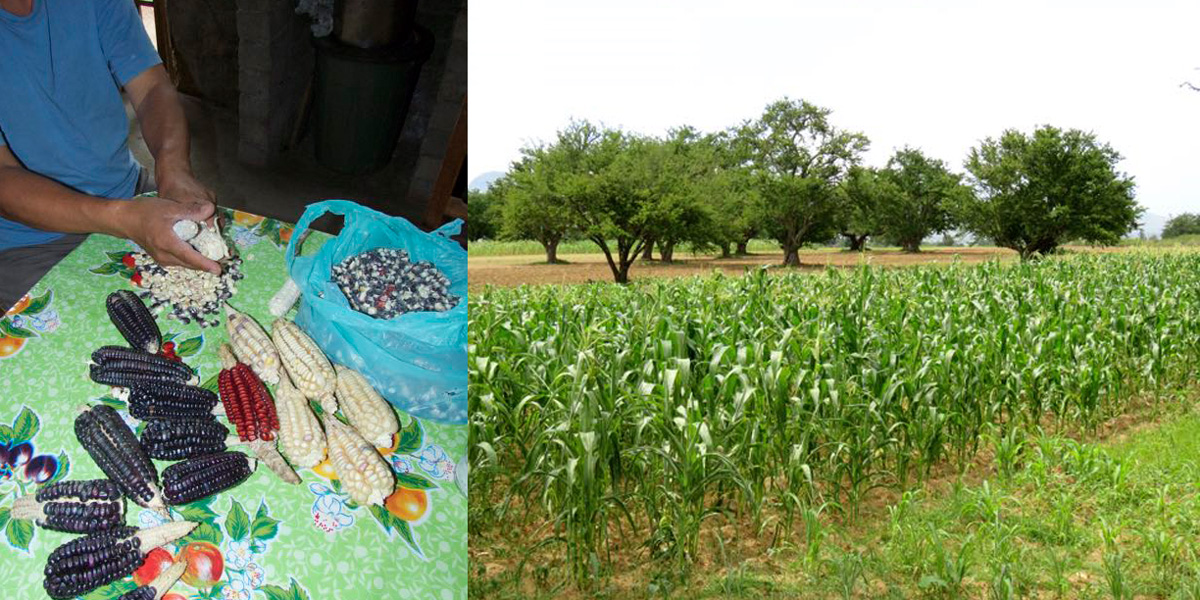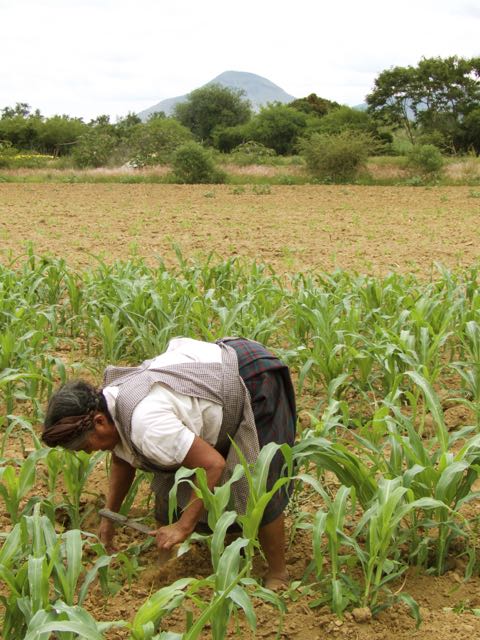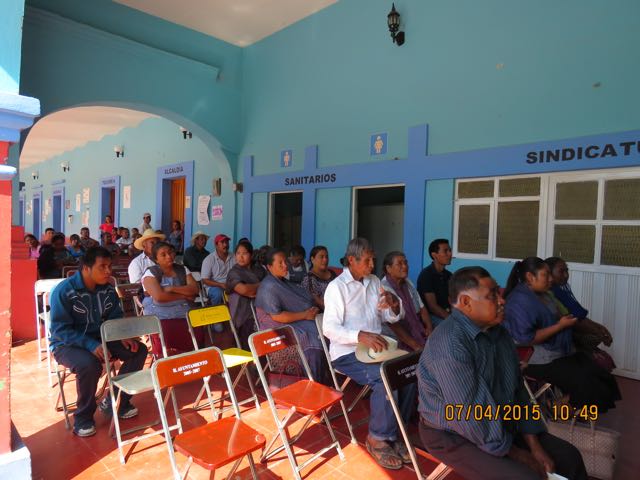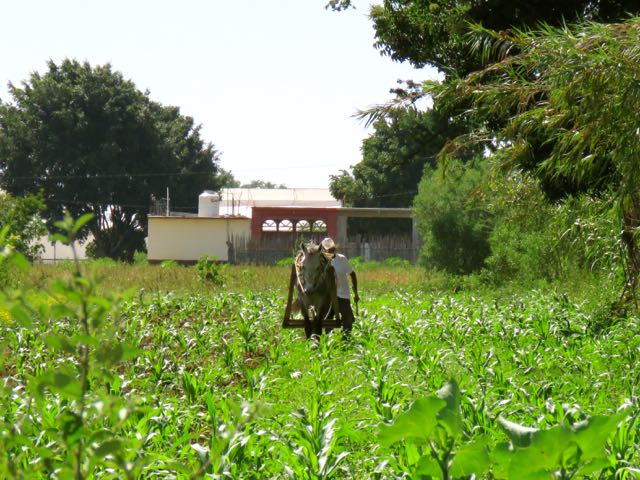
A new study reveals how GM contamination occurs and gives pointers as to how it might be avoided

GM genes are still getting into native Mexican maize varieties, a new study has found. This is in spite of the fact that the cultivation of GM maize is banned in Mexico, which is the genetic centre of origin for the crop. The study also identifies the crucial factors that decide whether or not GMO contamination occurs: the social organization and seed management systems of local communities.
The study, led by Dr Sarah Agapito-Tenfen, is the latest in a series that have found GM contamination in native Mexican maize varieties, beginning with David Quist and Ignacio Chapela’s investigation in 2001. Subsequent studies came to varying conclusions, but were difficult to compare with one another because they used different methods. Adding to the confusion was the slew of publications by GMO proponents who were keen to cast doubt on findings of GM contamination of Mexican maize by criticising the methodologies used.
While these studies focused on whether or not GM contamination was found in native Mexican maize, the vital question of how it might have got there was given less attention. The studies sampled farmer seeds and fields without collecting information on the social context in which the seeds were produced and maintained over time. Dr Agapito-Tenfen’s study aims to fill this knowledge gap.
Study of two communities
The researchers visited the Oaxaca region and collected samples from two communities for analysis, called in the paper Community A and Community B. In Community A, farmers grew native (“landrace”) maize and hybrid maize. They saved seed but also shared it outside the community. Farming decisions were taken at an individual level and fields were owned as individual property.
Community B was more isolated in terms of location, being further from the nearest town. Its people had a strong history of organization and defence of their rights, territories, and autonomy. Farmers grew only native maize. They saved the seed and only shared it within the community. Farming decisions were taken at a community level and fields were community property. Decisions made by the community had led to a ban on the replacement of traditional seeds by hybrid maize or maize from outside the community.
The researchers tested 57 samples in total: 13 from stores and local markets (12 in Community A and 1 in community B); 40 farmer samples; and 4 control samples. In Community A, six out of the 32 samples tested (18.75%) were positive for GMO contamination. In contrast, the samples from Community B were negative for GMO presence.

GM contamination “highly likely” in Mexican maize
The authors concluded, “Our results suggest that transgenes are highly likely to be present in Mexican maize landraces and importantly that the extent and frequency at which transgenes can be found will very much depend on the seed management practices and societal characteristics of the different communities engaged in maize farming.”
They added, “Communities in which seed sharing practices include the cultivation of seeds and/or grains from unknown varieties, such as DICONSA [a Mexican government-run distribution network] grains, are more vulnerable to transgene spread into their landrace varieties, which are usually cultivated in parallel.”
Dr Agapito-Tenfen told GMWatch: “The contamination results tell us that transgenes are entering Mexico through a formal system of grains and seeds imports for food and are being spread through an informal system of farmer seed sharing practices.
“Grains are imported from the US as food and they are GM. Then they are distributed by the Mexican government agencies. It appears that these imported grains and seeds are not being tested for GM presence by the Mexican authorities.
“Traditional farmers in Mexico often plant grains bought for food whenever there is a need for more seeds. Given the country’s ban on GMO cultivation, these grains should be GM-free, but this is not the case.”
The situation has been facilitated by Mexico’s signing up to NAFTA, a free trade agreement with the US, which has seen cheap, subsidized GM maize flooding across the border.

Knowledge to minimize GM contamination
At first glance the picture looks unremittingly gloomy to anyone who cares about the genetic integrity of maize in its centre of origin. But there is a positive side to the discoveries in the new study. As the authors point out, once people become aware of the mechanisms through which GM genes are getting into native crops, this knowledge can be used by farmers and community leaders to minimize GMO contamination.
The authors conclude, “Future analysis of transgene presence in maize landraces in Mexico, as well as the development of potential management strategies for controlling its spread, must include research and work on socio-cultural elements to better understand the role of seed management systems for how transgenes may enter and move through communities.”
Does GM contamination matter?
GMO defenders often argue that GM contamination does not matter and could even benefit native plants by supplying improved genetics. But the recent devastation of GM Bt cotton in India by the pink bollworm pest – a problem not shared by native non-GM varieties grown using organic methods – reminds us that laboratory-manipulated genes often fail in the field. Such GM genes would not improve native plants but, on the contrary, could weaken them.
In addition, GM food crops such as maize have not been properly tested to ensure they are safe to eat over the long term.

Difficulty of testing for GMO presence in landraces
The researchers on the new study were hampered in their work by the technical difficulties involved in testing for GMO presence in landraces, as Dr Agapito-Tenfen and her co-author Dr Fern Wickson explain in a second publication on the same study. They note that currently used GMO detection methods are not efficient at detecting transgenes in landraces and wild relatives. This is because such plants are heterogeneous, meaning that there are high levels of genetic variability between different plants of the same variety, which can lead to inconsistent test results. This is especially the case when transgenes are found at lower levels. In some cases, mobile elements within the plant’s own genome can change GM gene sequences and make them hard to identify.
The upshot is that GMO detection methods applied to landraces are prone to “false negative” findings – meaning that there is a GMO presence but it is missed. Detection methods are far better suited to testing homogeneous samples with a more uniform genetic makeup, such as modern maize varieties.
The study used the most sensitive and robust method for GMO screening, as well as validated protocols for GMO analysis and DNA extraction. In addition, an inter-laboratory analysis was carried out to confirm results. Nonetheless, even when the same validated protocols were applied to the same sample set, the researchers obtained inconsistent results on GMO presence across the three laboratories employed to carry out the testing and even across the replicates performed within the same laboratories.
The implication for this particular research study is that the GMO contamination was likely to be more extensive than the reported results suggest.
The authors concluded that “significant work remains to be done to optimize and potentially standardize GM detection methods for working with landraces and wild relatives in which it is likely that any presence of transgenes will be at low levels”.
Monitoring systems not in place
As well as the technical problems involved in identifying GMO presence in native crops in the laboratory, many countries simply don’t have the infrastructure in place to monitor for contamination. That includes some signatory countries to the international treaty to conserve the world’s biodiversity, the UN Convention on Biological Diversity. But even if systems to monitor the escape and impact of GM genes on landraces and wild relatives were put in place, the challenge would remain of the lack of dedicated methodologies for the detection of GM presence in these plants.
Given the difficulties faced by scientists and government regulators in keeping track of GM contamination, the clear message is that prevention is better than cure. Farmers and community leaders must urgently learn from the communities studied in the new research study and organize themselves to minimize opportunities for transgene entry.
If that means implementing survivalist-type “protectionist” measures to guard the integrity of native well-adapted seeds, then so be it. The situation has been forced on communities by the GMO industry and the communities need to respond with strong measures.
The studies:
Agapito-Tenfen, S., Rivera Lopez, F., Mallah, N., Abou-Slemayne, G., Trtikova M., Nodari, R.O., Wickson, F. (2017). “Transgene flow in Mexican maize revisited: Socio-biological analysis across two contrasting farmer communities and seed management systems”. Ecology and Evolution (published online 25 August) first) 1-12. DOI: 10.1002/ece3.3415. http://onlinelibrary.wiley.com/doi/10.1002/ece3.3415/abstract
Agapito-Tenfen, Sarah Z. and Wickson, Fern. (2017) “Challenges for transgene detection in landraces and wild relatives: learning from 15 years of debate over GM maize in Mexico”. Biodiversity Conservation https://doi.org/10.1007/s10531-017-1471-0
Report: Claire Robinson
Top images: A traditional Mexican farmer shows some of the varieties of maize seeds he has cultivated for many years; A maize plot and neighbouring plots. All photos by Sarah Agapito.










